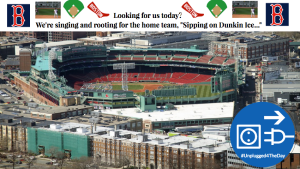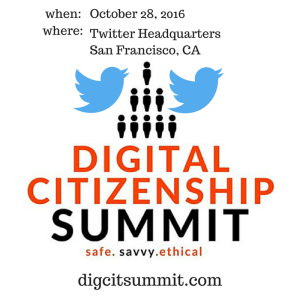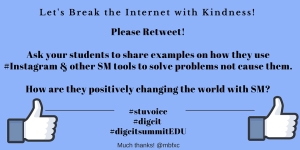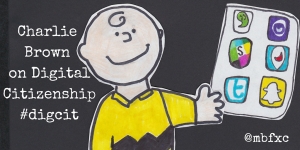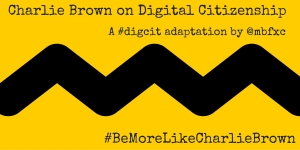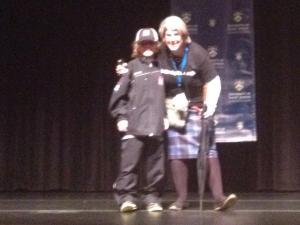.
 This week at EdcampCT, I had an opportunity to model the app Periscope with my colleague Judy Arzt. Periscope helps you explore the world through someone else’s eyes (and device). Judy and I decided to model the app during our session on social media in education. We had our live audience in Connecticut, as well as a global audience via Periscope.
This week at EdcampCT, I had an opportunity to model the app Periscope with my colleague Judy Arzt. Periscope helps you explore the world through someone else’s eyes (and device). Judy and I decided to model the app during our session on social media in education. We had our live audience in Connecticut, as well as a global audience via Periscope.
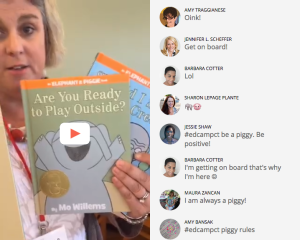
When planning our Periscope, I decided to bring some of my Elephant and Piggie books by Mo Willems. I thought it was the perfect analogy for social media in our schools today. We all know the Piggie in our school. Piggie is the educator who is already on board and excited. Piggie in the educational world is definitely a connected educator (and an Edcamp groupie, for sure). Unfortunately, we all know Gerald the Elephant in our schools too. Gerald is fearful, full of gloom and doom and waiting for the other shoe to drop. Gerald is afraid of social media and is the educator who is not on board and is perhaps rolling their eyes as Piggie shares her excitement over all the awesome things she learned at EdcampCT. The good news is that Piggie, by the end of the story is always able to win Gerald over. It is my hope, that as we start this new school year, we are just like Piggie and win over all the Geralds in our schools and communities.
 Since our session at Edcamp, I’ve been thinking a lot about Elephant and Piggie. For fun, I decided to write my own adaptation of Elephant and Piggie. My version is titled, We are Going 1:1! Social Media in Schools. The image is an original, so I would be following proper copyright (and modeling good digital citizenship too!)
Since our session at Edcamp, I’ve been thinking a lot about Elephant and Piggie. For fun, I decided to write my own adaptation of Elephant and Piggie. My version is titled, We are Going 1:1! Social Media in Schools. The image is an original, so I would be following proper copyright (and modeling good digital citizenship too!)
Piggie: [Excitement in voice] We are going 1:1!
Elephant: [Panic in voice] WE ARE GOING 1:1?!?
Piggie: Yes Gerald, we are going 1:1! We are bringing social media into every classroom!
Elephant: [Confusion in voice] Piggie, what is 1:1?
Piggie: [Excitement in voice] 1:1 means that everyone has access! Everyone will be able to connect and collaborate with the world.
Elephant: [Panic in voice] The world?!? How will we keep all of our students safe if we don’t have blocks and bans in place?
Piggie: We’ll embed digital citizenship into the curriculum!
Elephant: [Confusion in voice] What’s digital citizenship?
Piggie: Digital citizenship helps students be safe, aware, global and socially responsible both on and offline.
Piggie shows Gerald her device.
Elephant: [Concern in voice] Piggie, won’t the students be distracted with all these devices? How will they pay attention in school? I don’t think the teachers will like this at all.
Piggie: Gerald, social media is just another tool. It will help the teachers break down classroom walls and bring the world inside the classroom.
Elephant: [Panic in voice] They are going to break down the school walls? That is vandalism. This is not a good idea – not a good idea at all Piggie.
Piggie: Gerald, the school walls will not literally be knocked down.
Elephant: They won’t?
Piggie: No, they won’t. The devices like this one here [motions to the device in her hand] will help the teachers and students connect and collaborate with other classrooms around the world.
Elephant: [Confusion in voice] What will this look like?
Piggie: [Excitement in voice] Teachers and students will be able to use social media tools like Periscope, Google, Skype, Blab, Twitter and lots of other apps to learn together.
Elephant: How will these social media tools help them learn together?
Piggie: [Excitement in voice] The sky is the limit, Gerald. They can blog and get comments from other students and classrooms around the world, participate in Genius Hour, learn through Makerspaces and 3-D printers, participate in global projects like Mystery Skype, Global Read Aloud, Connected Educator Month, Dot Day, Hour of Code, and so much more.
Elephant: [Excitement in voice] Piggie, this is incredible! All these social media tools will provide ample opportunities for all students!
Elephant & Piggie: Yay! We are going 1:1! We are bringing social media into every classroom!
The next day.
 Elephant: Piggie, I was wondering, how schools will provide specific professional development on digital citizenship?
Elephant: Piggie, I was wondering, how schools will provide specific professional development on digital citizenship?
Piggie: Administrators, teachers, school counselors, library media specialists, students and parents will buy blocks of tickets to attend the Digital Citizenship Summit on October 3rd in Connecticut!
Elephant: What will they learn at the all day Digital Citizenship Summit?
Piggie: A lot, Gerald! The #digcitsummit is not to be missed! The all day event has national experts speaking about how to embed empathy and kindness early and often, digital etiquette, cyber ethics and law, issues surrounding privacy, how to parent in the digital age, digital literacy, copyright issues, resources to combat cyberbullying and promote a positive school climate, social media optimization for students, empowering educators by creating 1:1 learning environments, technology addiction and so much more.
Elephant: Where can I find more information and buy tickets?
Piggie: Just go to http://digcitsummit.com/ and follow the blog for updates and you can buy your tickets here: http://digcitsummit.com/registration/ or call the ticket office at 860.231.5555. Gerald, also follow @Digcit1 on Twitter for updates too.
Elephant: I can’t wait to go to the Digital Citizenship Summit to learn all about digital citizenship!
Hope to see you on 10/3 for another great day of learning at the #digcitsummit!
*For more information on our #EdcampCT session on Periscope, check out this post by Judy Arzt: School Media in Schools, Why Not?
*Watch our Periscope session, Role of Social Media in Schools on Katch.
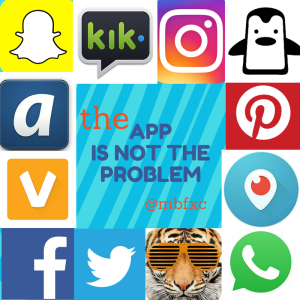 I can no longer remain silent about this.
I can no longer remain silent about this. 
